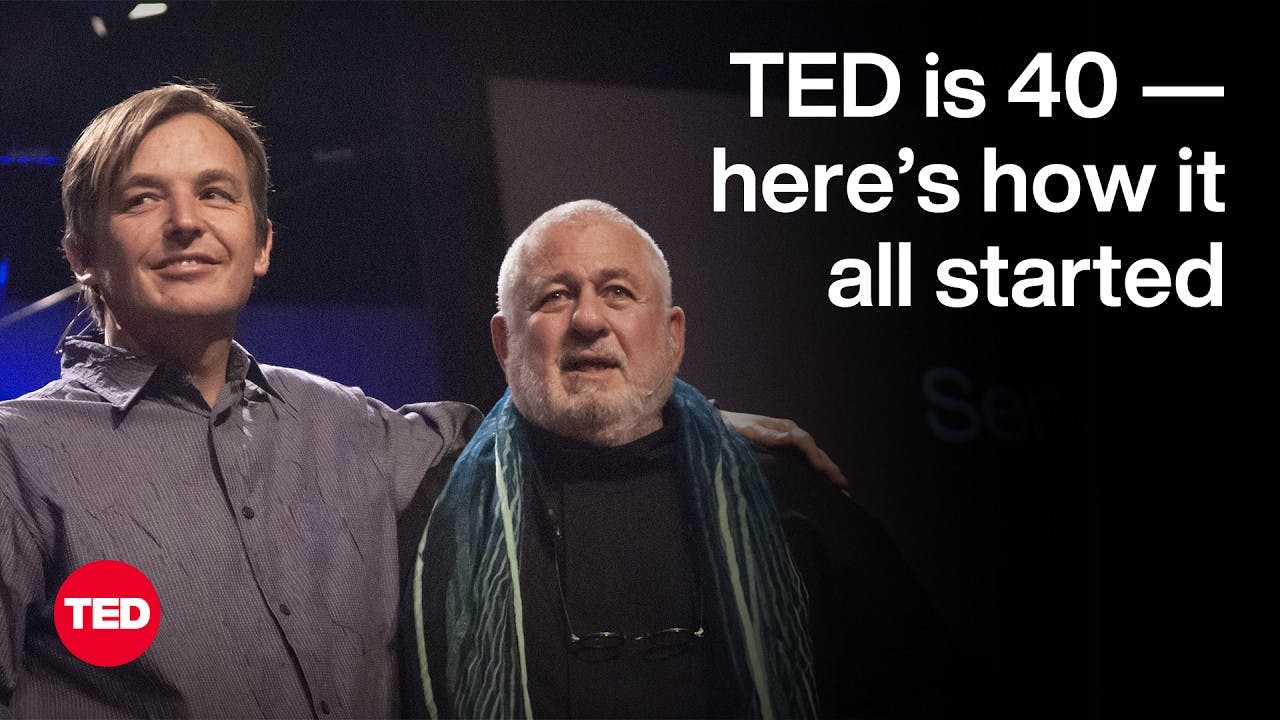TED Is 40 — Here’s How It All Started | Chris Anderson and Richard Saul Wurman | TED
()

Richard Saul Wurman and the Founding of TED
- Richard Saul Wurman (RSW), the founder of TED, categorized people into two types: vertical (focused on one field) and horizontal (interested in a wide range of subjects).
- RSW studied architecture at the University of Pennsylvania and took a variety of courses, developing his information architecture skills.
- He emphasized the importance of explaining things clearly and understanding how we explain and understand information.
- RSW became involved in conferences and impressed the board of the International Design Conference in Aspen with his complex speech, leading to his appointment as director.
- RSW organized the first TED conference in 1984 with financial support from Frank Stanton and Harry Marks, aiming to foster cross-industry collaboration between technology, entertainment, and design.
- Despite initial skepticism and financial losses, RSW organized the second TED conference in 1989 based on positive feedback from attendees.
- To ensure financial viability, RSW implemented a stricter policy requiring a minimum number of sign-ups or the conference would be canceled and refunds issued.
- The name "TED" was chosen, with the "E" representing "entertainment" and "education" to appeal to a broader audience.
Evolution and Impact of TED
- The first TED conference showcased innovations like the Apple Macintosh and introduced the MIT Media Lab concept by Nicholas Negroponte.
- Despite initial challenges, TED gained a positive reputation and became an annual event in Monterey, California.
- The growing buzz surrounding technology in the 1990s contributed to TED's increasing popularity and success.
- RSW curated TED by asking speakers to share new ideas and focused on good conversations rather than skilled speakers.
- He interrupted speakers if he didn't understand something, acting as the audience's conscience.
- TED was unique for its human focus, casual dress code, and emphasis on learning rather than commercial or political interests.
- Chris Anderson (CA) described his experience at TED and how he realized connections between seemingly unrelated ideas, leading to innovation.
- RSW showcased the human element by inviting Aimee Mullins, an athlete with artificial legs, to remove them on stage, moving the audience.
- RSW insisted on a casual dress code and famously cut off Nicholas Negroponte's tie when he wore formal attire.
- The audience coined terms like "TED Virgin" and "TED moment" to describe aspects of the event.
- Sherwin Nuland gave a surprising talk about his experience with clinical depression and electroshock therapy, shocking even his wife.
Transition from RSW to Chris Anderson
- Chris Anderson interviewed Richard Saul Wurman (RSW) about the transition of TED from RSW to Anderson.
- RSW mentioned a talk where the speaker revealed undergoing electroshock therapy, surprising the audience.
- Anderson praised RSW's accomplishments and compared him to Johnny Appleseed, who grafted different apple varieties onto a single tree.
- RSW corrected Anderson on the financial details of the sale, stating it was $14 million ($12 million in cash and $2 million in stock) instead of $6 million.
- Anderson mentioned buying TED back from his company for $6 million when it was going bankrupt.
- RSW admitted to feeling some seller's remorse and petulance after the sale, leading to a few difficult years between him and Anderson.
- RSW created a new conference called EG after the non-compete period but eventually gave it away.
- Anderson acknowledged that both he and RSW contributed significantly to TED's success, with RSW doing the "animal acts" and Anderson focusing on the intellectual content.
- Anderson mentioned featuring many animals on screen during TED talks, including a black bear that RSW kissed on stage.
RSW's Reflections on TED
- Richard Saul Wurman (RSW) reflected on his experience as the curator of TED conferences and the evolution of TED.
- RSW emphasized the importance of making interesting information accessible and understandable to the public, highlighting the need for "information architects" to present data clearly and engagingly.
- RSW discussed the tension between interesting and useful information, acknowledging that some in the TED community felt the conference had become too focused on "do-goodery" and "making the world a better place."
- RSW recalled memorable moments from his time curating TED, including audience members jumping for hats thrown into the crowd and a marriage proposal on stage.
- RSW addressed the challenge of inspiring lifelong learning and innovation in individuals who may not be naturally inclined to do so, suggesting that making interesting and accessible information available is key.
- RSW emphasized the importance of entertaining and engaging content to capture people's attention and make complex information understandable.
- RSW discussed the concept of "information anxiety" and the need to make data comprehensible to a wide audience, stressing the importance of asking good questions and understanding the patterns of information